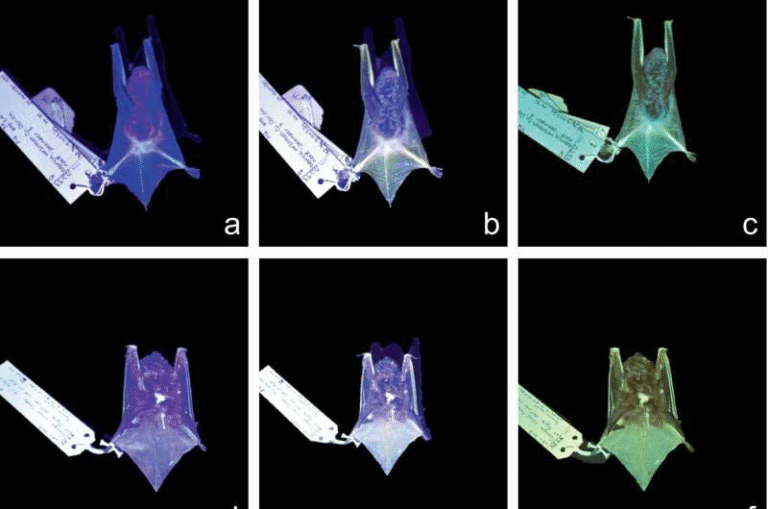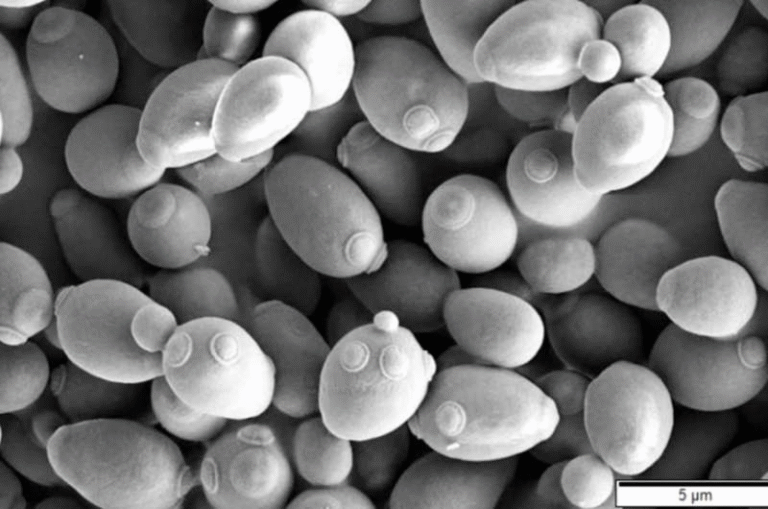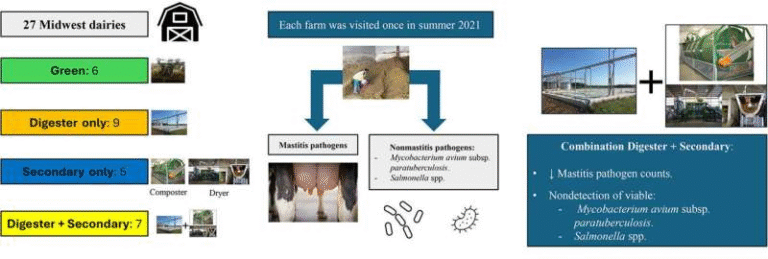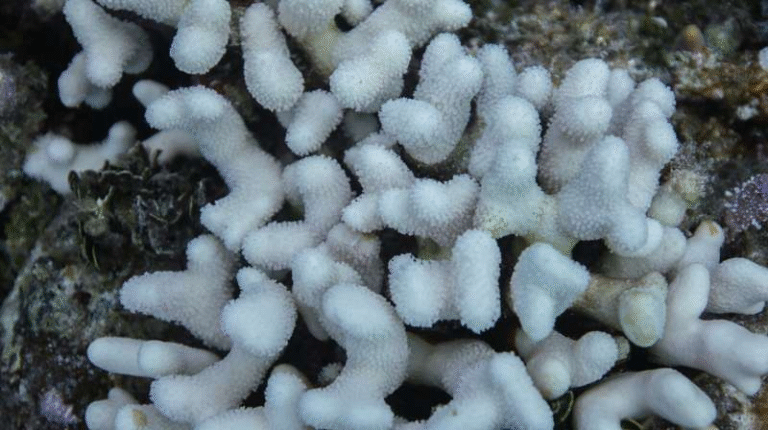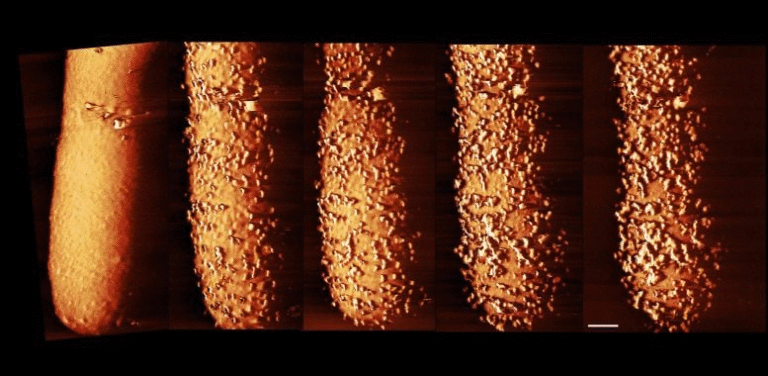Scientists Discover a Never-Before-Seen Tubular Structure Inside a Symbiotic Bacterium

An international team of researchers has uncovered something entirely new in the microbial world: tubular structures inside Candidatus Profftella armatura, a bacterium that lives in partnership with the Asian citrus psyllid (Diaphorina citri). Nothing like this has ever been reported in bacteria or any other life form, and the finding could open up fresh directions in both pest control and evolutionary biology.
The Discovery in Detail
The unusual structures were identified inside Profftella, an obligate symbiont passed down through generations of the Asian citrus psyllid. This insect is infamous for the destruction it causes in citrus crops worldwide, partly because it spreads the bacteria that cause huanglongbing (HLB), or citrus greening disease. The psyllid itself relies on Profftella for survival, and the bacterium contributes by producing a toxic compound called diaphorin.
What makes the discovery remarkable is that researchers found elongated, stable tubular structures within Profftella cells using advanced 3D electron microscopy and high-voltage electron microscopy tomography. These tubes are unlike anything seen before in bacteria.
Characteristics of the Tubes
- The Profftella cells themselves are unusual: they can be extremely long, reaching up to about 136 micrometers in length.
- Inside these elongated cells, the scientists observed between 1 and 43 tubular structures, with some tubes measuring up to 45 micrometers in linear length.
- Each tube is about 230 nanometers in diameter, remarkably consistent along its length.
- Structurally, the tubes are built from 5 to 6 helical fibers twisted into a right-handed helix, giving them a robust, rope-like appearance.
- On average, these tubes take up around 6.3 percent of the total volume of a Profftella cell.
- Unlike most bacterial components that collapse under harsh imaging conditions, these tubes remained extremely stable, even under high-vacuum observation without chemical treatments.
The tubes can sometimes appear folded, tangled, or even branched. Their resilience and size make them an entirely new kind of bacterial organelle, challenging long-standing assumptions that bacteria are simple organisms without such complexity.
What Are the Tubes Doing?
The exact function of these tubes is not yet known, but researchers have gathered some clues:
- Ribosomes, the cellular machines that make proteins, were found clustered along the tubes. This suggests they may have a role in protein synthesis.
- Their sturdiness indicates they could act as internal support structures, similar to how the cytoskeleton works in more complex eukaryotic cells.
- Another possibility is that they function as scaffolds for material transport, helping move molecules around inside the bacterium.
Whatever their true role, the tubes represent a level of organization never before documented in bacteria.
Why This Matters for Pest Control
The Asian citrus psyllid is considered one of the most destructive citrus pests globally. By spreading citrus greening disease, it reduces crop yields and drives up fruit prices, creating huge agricultural losses.
Profftella itself contributes to the psyllid’s resilience by producing diaphorin, a polyketide toxin. Interestingly, this compound makes up about 15 percent of the bacterium’s genome capacity. In psyllids, diaphorin reaches concentrations of 2–20 millimolar, depending on the insect’s life stage.
Studies have shown that diaphorin inhibits certain bacteria like Bacillus subtilis but can stimulate growth in Escherichia coli under specific conditions. This suggests that Profftella is not just passively living in the psyllid but is actively shaping its host’s defensive capabilities.
If these new tubular structures are connected to how Profftella produces or manages toxins like diaphorin, they could become a target for novel pest control strategies. Disrupting them might weaken the bacterium, and by extension, the psyllid, providing a more selective and environmentally friendly way to combat citrus greening disease.
Rethinking Bacterial Complexity
Traditionally, bacteria have been described as simple cells without organelles. This discovery proves otherwise.
While some bacteria are known to form specialized compartments or protein-based structures, the scale, architecture, and durability of these tubes are unprecedented. They may represent an entirely new category of bacterial organelle.
This challenges long-held assumptions about the evolution of cellular structures, suggesting that complex internal organization is not limited to eukaryotes (plants, animals, fungi).
The Research Team and Institutions
The discovery was made possible by advanced imaging technologies and collaborations across multiple universities and institutes:
- Pusan National University (Korea)
- National Institute for Physiological Sciences (Japan)
- Kobe University (Japan)
- Toyohashi University of Technology (Japan)
Funding for the project came from the Japan Society for the Promotion of Science (JSPS) and the National Research Foundation of Korea (NRF).
Beyond the Discovery: Understanding the Psyllid and Its Symbiont
The Asian Citrus Psyllid
The Asian citrus psyllid (Diaphorina citri) is a small, sap-feeding insect originally native to Asia but now widespread in the Americas and other regions. Its main agricultural importance lies in its role as a vector for huanglongbing (HLB), also known as citrus greening disease.
HLB is one of the most devastating citrus diseases. It causes fruit to be misshapen and bitter, reduces yields drastically, and eventually kills the trees. Once established, it is nearly impossible to eradicate, making psyllid control essential for citrus production.
The Role of Symbiotic Bacteria
Insects often depend on symbiotic bacteria to provide essential nutrients or compounds that they cannot synthesize themselves. In the case of D. citri, Profftella does more than just supply nutrients: it arms the insect with chemical defenses, enhancing its survival against natural enemies.
Why Diaphorin Matters
Diaphorin is a polyketide toxin unique to Profftella. It is structurally similar to other toxins produced by microbes that have both defensive and ecological roles. Its high concentration in psyllids indicates it is critical for their survival. By weakening or disrupting Profftella’s functions, scientists could potentially reduce the psyllid’s resilience and its ability to spread HLB.
Future Questions Raised
The discovery of these tubular structures raises several new scientific questions:
- Are these tubes unique to Profftella, or might similar structures exist in other bacteria?
- How exactly do the tubes interact with ribosomes and protein synthesis?
- Could they play a role in the transport or concentration of diaphorin inside the bacterium?
- Can these structures be targeted safely in pest management without harming beneficial microbes?
These are avenues that researchers are only beginning to explore.
The Bigger Picture
This discovery reminds us that bacteria are far from simple. For decades, scientists considered them stripped-down cells with little internal complexity. But as imaging technologies advance, new surprises keep emerging.
Just as the discovery of bacterial microcompartments or cytoskeletal proteins reshaped microbiology, this finding of large, stable helical tubes inside Profftella could spark a new wave of research into bacterial cell biology.
At the same time, because this bacterium is tied to a major agricultural pest, the work has immediate relevance for global food security. If scientists can unravel the role of these tubes, it might point the way toward novel pest control strategies that are more selective and sustainable than broad-spectrum insecticides.
Conclusion
The finding of never-before-seen tubular structures in Profftella is both a biological mystery and a potential breakthrough for agriculture. By expanding our understanding of bacterial complexity, it forces us to rethink what bacteria are capable of. And by connecting this to the survival of a destructive citrus pest, it highlights how fundamental research can have real-world consequences.
This is one of those rare discoveries that bridges the gap between basic science and practical applications. What started as a quest to look closer at a tiny symbiotic bacterium may, in time, help us protect citrus crops around the world.
